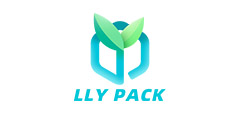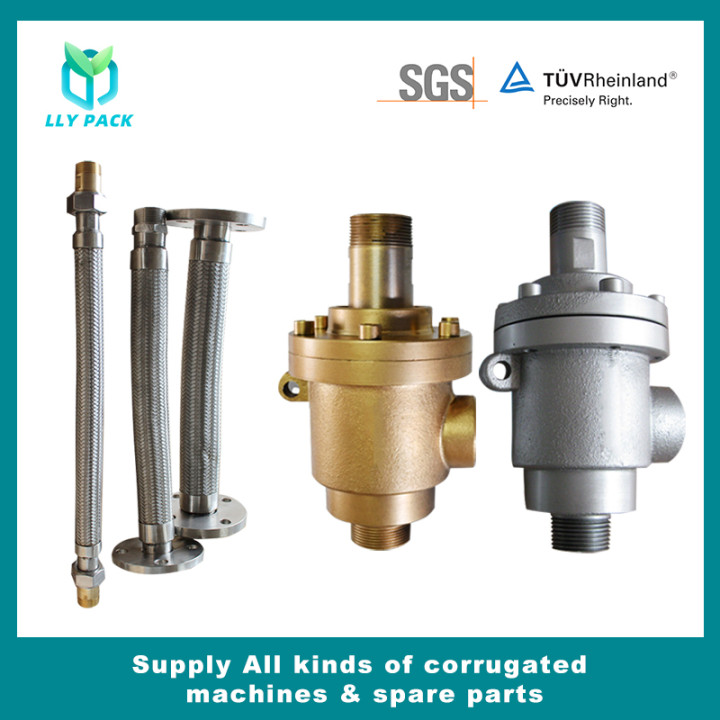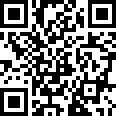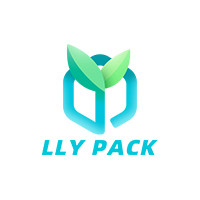In recent years, with the continuous emergence of new equipment, new materials and new technologies, the printing technology of corrugated cardboard is maturing and improving. The carton packaging production process with corrugated cardboard direct printing and offline pre-printing as its main features has been widely used in the packaging field due to its high quality, low long-term comprehensive cost, short cycle efficiency, high environmental protection and other advantages. To a certain extent, it has replaced offset printing and has become a trend.
In the past two years, people have mostly seen some water-based direct printed products with high mesh lines (some up to 110 lines) or some offline pre-printed products in the exhibition or from the printed samples. Moreover, several well-known domestic machinery and equipment manufacturers are promoting. Water-based direct printing equipment factories such as Nanhai Dongfang, Shanghai Dinglong, Beijing Dobeck and Taiwan Changsheng, TCY, etc .; offline pre-printing machinery manufacturers such as Qingzhou's Egofa and Guangzhou Kesi Gao. It is unthinkable that such a high-net-line printed matter was realized with domestic equipment a few years ago.
The water-based printing of corrugated paper with high mesh line is a comprehensive system of coordination process, it is not just a single link to do a good job, she needs to adjust and cooperate with each other to achieve a relatively optimal value in order to print a beautiful piece. product. Such as plate making, ink, corrugated paper and cardboard, printing equipment, printing technology and other links are very important, and they must cooperate well. The following is a brief discussion on how to realize the water-based printing of high-net-line corrugated paper.
1. In terms of flexible plate-making, determine the best solution that is suitable for both printing and product design
1. Determine printability conditions
First, we must understand the customer's printing equipment, such as the color number of the unit, the type and line number of the anilox roller, the basic conditions of the paper feeding system, and the scraper system. There are also paper types, such as white paper or coated paper. Conditional platemakers generally provide a set of test plates to test the printing suitability of the printing press. It includes a ladder bar for testing the expansion of different network lines and dots of the flexographic version, a color block used to measure the solid density value of the ink, a simple chromatogram with different dot ratios overprinted, yin and yang characters and straight lines of different font sizes, a module for measuring color error To observe the pressure bar of the printing equilibrium pressure and so on. The test printing plate needs to be completed under normal production conditions such as normal printing board, standard production of water-based ink, normal printing pressure and vehicle speed. Of course, you can change some printing conditions to get different test samples. Through the analysis of the test sample, we can get the printability of this type of printing machine under this condition. The dot expansion curve of each color, the solid density of the water-based ink, the hue value, the dot collision situation, the influence of the color sequence, the reduction of thin lines, the overprint error, and the printing balance pressure can be obtained.
Combining the test data obtained above and the printing effect of the test sample, the plate-making company can establish a color matching management system for this printer, such as establishing a dot compensation curve for dot expansion, screen color and gamma curve correction, and proofing machine Color simulation and matching, etc.
2. Determine the plate-making process and color separation plan
In flexo plate-making, the determination of the color separation process plan is a critical factor. To a certain extent, it can play a decisive role in the success of printing high-net-line products. Yingjie Plate-making Company has been devoting itself to the research and promotion of carton color water-based high-network line plate-making for many years. In 2004 and 2005, China Flexo Printing Association and DuPont Corrugated Competition were the biggest winners, and won the "Outstanding Contribution Award" in the platemaking industry. The specific details of the two award-winning works are explained below.
The foreground of the "JVC" audio packaging box is a clear speaker, and the background is a kind of effect that gradually changes to a net, which is a little hazy. This effect of gradual transition to absolute screen should be relatively easy to achieve for offset printing, but it is more difficult for watermarks to follow the conventional halftone method. Discrete frequency modulation dots will destroy the details of the image, but for corrugated boxes such as large areas with pitted surface printing, it is not easy to appear ribs. In addition, it will be more natural for the screen, and there will be no hard holes. Therefore, we decided to use the usual dot network for the foreground sound, and the discrete FM network for the background, and adjust the range and sequence of each color in combination with the product tone. The watermark effect obtained in this way, on the one hand, because the foreground and background use different mesh types, the foreground effect is more prominent, the background gradient is natural and reasonable, highlighting the hazy feeling, and well reflects the designer's design ideas. On the other hand, the discrete outlets adopt a certain screening technology, which increases the anti-counterfeiting of products. So the customer was very satisfied, the signing was successful once, and all series of "JVC" were transferred to the watermark.
Another example is the determination of the color scheme of the 'pullable can body' on the outer packaging box of "Jishu" brand coconut milk. This box was originally printed by offset printing, and the can body was made by four-color overprinting. The four-color net in Chengdu is relatively high and close to the ground. If these data are simply applied to the watermark, the effect of the four-color overprinted part will be neither black and unreal, nor chaotic, which is far from the offset printing effect. This is because the printer printing this product does not have a direct drying system, and the distance between the color groups is short, and the printing speed is fast, so that the previous color with a larger ink volume can be dried in the future, and the latter color has been imprinted. In this way, not only the back color is difficult to attach, but the printing plate will also stick back the ink of the previous color without drying back to the printing plate. This not only wastes ink, but of course the results are not ideal. Therefore, the total amount of ink printed by the watermarking machine must be considered when separating the color of this part (which can be analyzed from the test sample). The black tank part mainly reflects the gradation in black, so the tone level is strengthened for the black version, and the extra black ink is used. The other three-color screen formation is greatly reduced, and only 10% of the dots are reserved for magenta and yellow. The blackness and color of the tank are more reserved. In order to accurately register the color, other colors on the edge of the tank body retracted slightly towards the tank body. The transition between the black and the color pattern on the black tank body should be more natural, and don't appear hard. As a result, the effect of this color separation printing is very hierarchical, and the pattern is clear and full of colors.
There are many more such color separation cases. Separation of water-based printing should use as little color as possible, as pure as possible to complete the color superposition. This is very helpful for printing and reducing costs, reflecting the packaging effect.
3. Selection of the number and angle of the printing plate plus screen line
The number of screen lines of printing plate is restricted by the number of screen lines of anilox roller, and the ratio between the two is 1: 5 or more. The anilox roller of 400L / in can achieve the printing plate of 80L / in at most, the line number is too high and it is easy to paste and produce moire. Therefore, the higher the number of screens, the better. And the printing effect of 80L / in and 75L / in will not be much different in terms of fineness.
According to the angle of the anilox roller, the screen angle of the watermark mainly adopts two angles of 7, 37, 67, 82 and 7, 22, 52 and 82. However, the angle of the screen should be based on the actual product and cannot be one size fits all. If the linear pattern of the monochromatic netting is linear, the angle of the netting must be 45 degrees or 0 degrees, otherwise the edges of the netting pattern will appear more jagged. The selection of the superimposed pattern angle should be based on the principle that the hue angle of the main color of the product pattern differs by 30 degrees. If the portrait skin is dominated by yellow tones, then the color difference between magenta and yellow should be above 30 degrees; if the landscape is dominated by green tones, then the color difference between cyan and yellow must be above 30 degrees, otherwise it will easily produce moire . Conditional plate-making companies will conduct proofing simulation of screening to determine the best screening method.
4. Plate material selection of high network cable plate making
The printing plate used for high screen printing has a hardness slightly higher than that of the general printing requirements. This is because this printing process requires a small amount of ink in order to accurately reflect the fine dots. If the printing plate is too soft, the ink transfer volume will be too large, which is not conducive to the control of the ink volume, and it is easy to appear faults such as color shift and network blocking. In addition, it also requires the plate to have a good dot reproduction range, which can produce small high-gloss dots; it has a uniform thickness and good flatness, which is convenient for light pressure printing and easy reproduction of the original; it has good flexibility , After being pressed, it can restore the original thickness and the plate must have a certain toughness, and the small dots are not easy to wear. At present, the plate materials commonly used for this type of printing include DuPont's TDR.
2. The requirements of high net line water-based printing on paper, cardboard and water-based ink
1. Cardboard
To achieve an effect comparable to offset printing, it is best to use coated whiteboard. Because the coated white paper has a better finish, the imprint is more shiny and bright. Ordinary whiteboard paper has poor surface gloss, and the imprint color is dull and dull. In addition, coated whiteboard paper is different from offset paper and coated paper. It retains some of the original characteristics of whiteboard paper-permeability and adhesion, which is conducive to the printing of water-based inks. Cardboard can be used with uniform thickness, smooth paper surface, moisture control at 9 ± 2% and good hardness. Corrugated E-type, F-type or G-type corrugated paper with a weight of about 180g / m2. This kind of cardboard has low corrugation and flat cardboard, which can withstand more pressure, reduce ribs and false marks, and improve print quality. At present, coated white paper can be provided by Finnish Paper Company, and there are several domestic manufacturers in Guangdong that can provide it.
2. Ink
Ink is a key factor in the entire printing process. For four-color overprinted high-net-line jobs, we must pay attention to the choice of ink. This is related to the lack of experience of previous printing manufacturers. The ink of printing coated paper is different from ordinary ink, it mainly requires the following characteristics.
Good fineness-clear dots and delicate patterns; high gloss-bright and bright colors; low viscosity-no blocking nets, ink bars, clean and refreshing graphics; high color content-full color, rich connotation; attachment Good-anti-wear, no color fading; good leveling-uniform color, no exposed bottom; fast drying-good color overlapping effect, no dragging; good overprinting-good compatibility between colors, natural color, harmony, level rich. At present, ink manufacturers that can be widely used for printing on coated paper are Guangdong Mingfeng Ink, Yingjie Ink, and Oriental Ink.
3. Requirements of high net line water-based printing on equipment and printing operations
1. Equipment requirements
scraper. The printing machine that can complete the high screen printing must have a scraper, and also requires a sealed double scraper, and maintain the effectiveness of the scraper scraping, in order to accurately control the ink transfer.
drying. Drying device is a more important configuration of new printing equipment. Because the ink drying on the coated paper by penetration is significantly slower than ordinary whiteboard paper, multi-color nesting requires the first color ink to dry as soon as possible, and the latter color can be stacked smoothly, so advanced printing machines either use cold air drying or increase the unit Distance to allow the board to have enough time to dry, or equipped with infrared, UV and other drying devices.
Closed circulation ink path. Closing the ink path helps prevent excessive contact between the ink and the air, and prevents certain components of the ink from volatilizing, oxidizing, and dissolving into air bubbles. Only by maintaining the stability of the ink composition can high-quality printing be successfully completed.
High-net line anilox roller. This is one of the most important conditions for achieving high screen printing. The higher the number of screen lines, the higher the screen lines that can be printed, and the smaller the amount of ink transfer, which helps to reproduce small high-gloss dots.
Suction paper feeding, full paper absorption. It can improve the flatness of the cardboard and smoothly feed the paper to ensure accuracy and register accuracy. Liner (between printing plate and plate roller). Better pads can cushion and adjust the pressure, protect the fine dots, and increase the life of the printing plate.
2. Printing operation
Pressure-Pressure is the most critical control element in the printing process. The pressure adjustment must be just right. The pressure is too light: insufficient ink application, light color, uneven coloring, exposed bottom, virtual edges; excessive pressure: blocking the network, dirty version, rough edges, dot expansion, darker color, dark image.
Ink transfer volume-The ink transfer volume can be adjusted by controlling the pressure, changing the viscosity and transferability of the ink. In addition to affecting the color accuracy, the size of the ink transfer amount is also directly related to the performance of drying, color overlapping, leveling, and adhesion of the blot. You must be careful to master the product.
Color sequence-When the four primary color gradation plates are overprinted on coated paper, the best color sequence is usually: C, M, Y, K.
① Black is the complementary color that adjusts the light and dark levels and enhances the three-dimensional sense. It is usually placed at the end;
② The transparency of yellow is better than C and M, so it is placed on the back print;
③ The gloss of water-based ink is lower than that of oil-based ink, which is a disadvantage of flexo printing compared with offset printing. When the color sequence is printed from light to dark, the overall effect of the product will be more dim. From dark to light printing, the color will appear bright and bright;
④. To prevent "color drift", the phenomenon that the color material of the latter color group is transferred into the ink fountain of the previous color group during the printing process is called "color drift". Dark colors "channel" to light colors, and light-colored inks are scrapped; light colors "channel" to dark colors, with little effect, so the color sequence from dark to light should be adopted.
Machine speed-because the specific conditions of each device are different, we cannot generalize. In practice, we generally control the machine speed to 6000-9000pcs / h according to the actual situation. The speed is too slow: the amount of ink is large, the color is dark, and the drying is excessive; the speed is too fast, the drying is insufficient, the color stacking is difficult, the stain is dirty, and the set is not accurate.
Wipe the printing plate with a special washing liquid ring-in order to prevent the dry ink from corroding the printing plate, keep the printing plate clean; the dots are round, so the method of wiping with a ring; Wash solution, wipe carefully.
The above are the various factors and conditions that should be paid attention to to realize the exquisite high net line water-based printed matter. With the maturity and improvement of various supporting technical equipment, I believe this technology will be more widely used.










